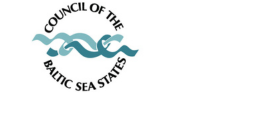Rural Cultural Planning (RurCultural)
How can smaller towns and rural communities take full advantage of the areas’ locality, history, tradition, skills and strengths?
Rural Cultural Planning is born out of the experience and knowledge accumulated in the recently concluded Interreg BSR project Urb Cultural Planning (2019-2021). From this project, the method ‘Cultural Planning’ will be transferred into the new project. The method can enhance the capacity of public authorities to deal with complex societal problems in rural areas, such as: depopulation, lack of job opportunities, declining quality of life by ensuring the participation of citizens and the cultural and creative sector.
Rural Cultural Planning will share the same ideas and values as Urb Cultural Planning, with regard to citizen-to-citizen and citizen-to-city interaction.
The method of cultural planning will be made suitable for rural areas and will concentrate on the areas’ locality, history, tradition, skills and strengths.
Pilot projects
Rural Cultural Planning will begin as a pilot project in one municipality per partner country (DK, LV, and LT) which means 3 municipalities in total. In Latvia, the chosen territory for the pilot project is located in the city of Līgatne in the region Vidzeme. Beside its beautiful nature surroundings, the city has its mill and wooden houses as historical buildings. Līgatne has also been the winner of European Destinations of Excellency (EDEN).
In Denmark the chosen municipality is Billund’s Museums of Municipalities (Billund Kommunes Museer), who is interested in implementing the project as part of their new museum standards and experiences, and to make cultural history relevant and provide new insight and perspective on the world – to engage people in our common future. With Rural Cultural Planning the organization has a chance to reach even more citizens and tourists of which will get to learn about Billund’s cultural history.
The chosen town in Lithuania will be Papilė which is located in the Samogitia region in Northen Lithuania. It is a small town with a population of 827 habitants, where the local life is shaped by farming activities, and the town has also got cultural and educational infrastructure. Meandering through the heart of Papilė, the Venta river has shaped the location’s character significantly. Papilė stands on the geological layer of the Jurassic period rich with fossils and ammonites of prehistoric creatures.

